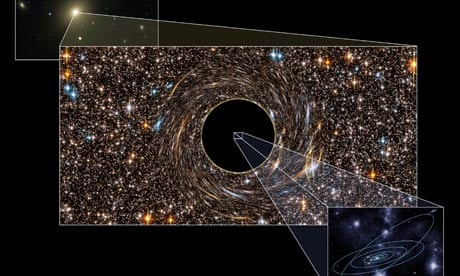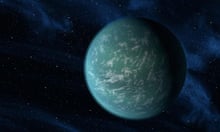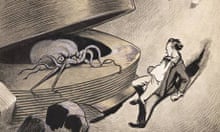Astronomers have located the two biggest black holes ever found, each one billions of times more massive than our sun. Observations of these supermassive cosmic objects will give scientists clues on how black holes and galaxies formed and evolved, especially in the earliest stages of the universe's existence.
The galaxy NGC 3842, around 320m light years from Earth in the constellation of Leo, has a black hole at its centre with a mass of around 9.7bn suns. An even bigger black hole with a mass of around 21bn suns exists at the heart of galaxy NGC 4889, the brightest galaxy in the Coma cluster, around 336m light years from Earth.
These two newly discovered supermassive black holes were found by analysing data from the Hubble Space Telescope and two of the biggest ground-based telescopes in the world, the Gemini North and Keck 2 facilities in Hawaii. The work, led by Douglas O Richstone of the department of astronomy at the University of Michigan, Ann Arbor, is published this week in Nature.
Until now, the biggest recorded black hole was the one at the centre of the giant elliptical galaxy Messier 87, measuring 6.3bn suns.
Black holes are a one-way ticket to mystery, a place where known physics seems to break down and the space we are all familiar with becomes supremely strange. They begin as massive stars (at least six times the mass of our sun) and, after billions of years of shining they collapse in on themselves into a singularity, a point smaller than the full-stop at the end of this sentence.
Albert Einstein's general theory of relativity predicts that, if matter is compressed into a small enough space, the resulting gravity gets so strong that nothing nearby can escape the pull. The boundary of the region where the gravity of a collapsed star beats every other force around is called the event horizon. Pass this point, and there is no coming back, not even for particles of light.
Observational work from the past few decades has shown that supermassive black holes are likely to be at the centre of all big galaxies, determining how these structures are formed and how they will evolve over time.
Michele Cappellari, an astrophysicist at the University of Oxford who was not involved with the discovery, wrote in an accompanying article in Nature that the discovery of the supermassive black holes would help provide clues to the formation of such big objects.
There are two ideas for how such massive black holes could form. One theory suggests that a smaller black hole simply absorbs lots of gas from a surrounding spiral galaxy until it gets to its size. Another theory suggests that supermassive black holes can form by the merger of two lenticular galaxies (which are intermediate in shape between elliptical and spiral) that have black holes at their centres. The result is a spherical galaxy with a coalesced supermassive black hole in the centre.
Scientists have worked out that the mass of supermassive black holes studied so far is closely related to the amount of random motion (known as the velocity dispersion) of the stars in the central parts of the galaxies that surround them.
"Interestingly, the two newly measured supermassive black holes are more massive than would be predicted from their velocity dispersion," Cappellari wrote. "This suggests that, unlike their smaller counterparts, these black holes did not grow most of their mass by gas accretion but instead grew by the 'dry' merging of gas-poor galaxies."








Comments (…)
Sign in or create your Guardian account to join the discussion